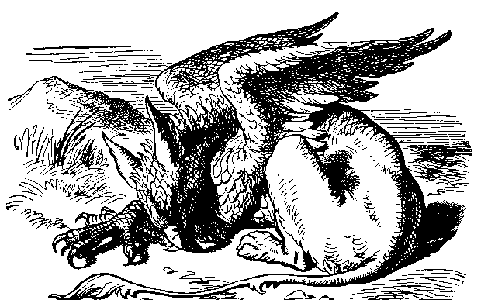
The Eagle and the Lion

The Eagle and the Lion
The griffin, griffon, or gryphon is a legendary creature with the body of a lion and the head and wings of an eagle. As the lion was traditionally considered the king of the beasts and the eagle was the king of the birds, the griffin was thought to be an especially powerful and majestic creature.
Griffins are known for guarding treasure and priceless possessions. Adrienne Mayor, a classical folklorist, proposes that the griffin was an ancient misconception derived from the fossilized remains of the Protoceratops found in gold mines in the Altai mountains of Scythia, in present day southeastern Kazakhstan.
In antiquity it was a symbol of divine power and a guardian of the divine. Some have suggested that the word griffin is cognate with Cherub.
Over the centuries the griffin - as with other mythological creatures - has taken many shapes.
The griffin has served many purposes, including but not limited to "the vigilant guardian of treasure and of kings. It has been called "The Hounds of Zeus".
It has pulled the chariots of Pharaoh, Apollo, Nemesis, and Alexander the Great. A major heraldic animal, it has been emblazoned on the shields of knights and on the coats of arms and royalty. It has been watchful and loyal, graceful and swift, rapacious and vengeful, monstrous and divine. While the griffin is a mortal enemy of horses, its magic talons have detected poison and its feathers have cured blindness.
Winged lions are not true griffin, nor is the winged lion of the sea. All of them, though - along with countless other hybrid variations - are 'gryphonic.'" The three spellings for griffin are - gryphon, griffin and griffon.
Most statues have bird-like talons, although in some older illustrations griffins have a lion's forelimbs; they generally have a lion's hindquarters. Its eagle's head is conventionally given prominent ears; these are sometimes described as the lion's ears, but are often elongated (more like a horse's), and are sometimes feathered.
Infrequently, a griffin is portrayed without wings, or a wingless eagle-headed lion is identified as a griffin; in 15th-century and later heraldry such a beast may be called an alce or a keythong.
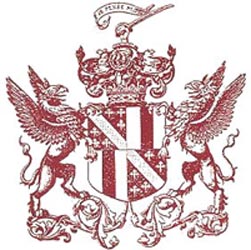
The unique form and noble look of the griffin made it perfect for heraldry.
Female heraldic griffins on shields and crests have wings, while the males sport fans of spines growing from their shoulders. They live on today at Renaissance festivals and in our imagination. The male griffin is more usually shown, as in the Bevan family crest. Also they can be seen as sacred animals to the greek god Apollo.
In heraldry, a griffin always has forelegs like an eagle's; the beast with forelimbs like a lion's forelegs was distinguished by perhaps only one English herald of later heraldry as the opinicus. The griffin's amalgamation of lion and eagle gains in courage and boldness, and is always drawn to powerful fierce monsters. It is used to denote strength and military courage and leadership. Griffins are portrayed with a lion's body, an eagle's head, long ears, and an eagle's claws, to indicate that one must combine intelligence and strength. In British heraldry, a male griffin is shown with wings, its body covered in tufts of formidable spikes.
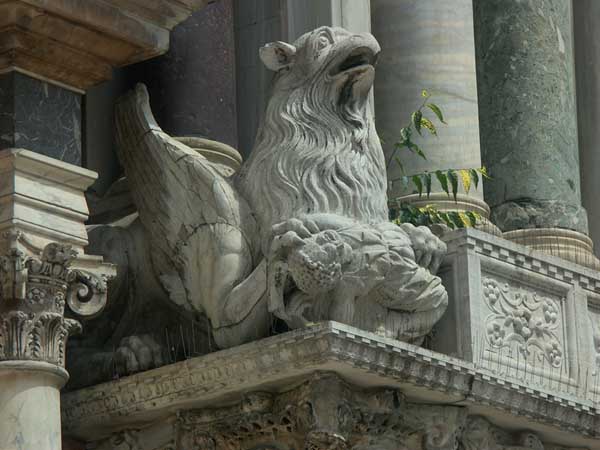
In architectural decoration the griffin is usually represented as a four-footed beast with wings and the head of an eagle with horns, or with the head and beak of an eagle. Gryphon statues mark the entrance to the City of London.
Depiction of griffins can be found in the 15th century BC frescoes in the Throne Room of the Bronze Age Palace of Knossos, as restored by Sir Arthur Evans. It continued being a favored decorative theme in Archaic and Classical Greek art.
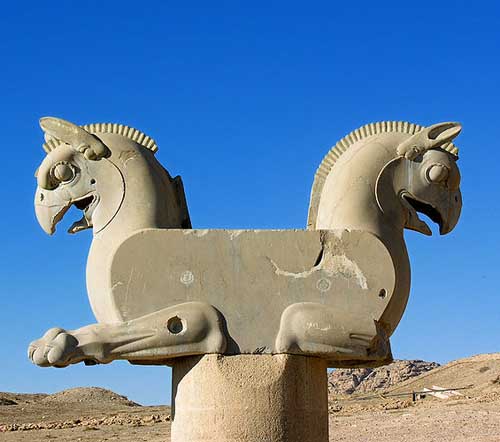
In Central Asia the griffin appears about a thousand years after Bronze Age Crete, in the 5th-4th century BC, probably originating from the Achaemenid Persian Empire. The Achaemenids considered the griffin "a protector from evil, witchcraft and secret slander".
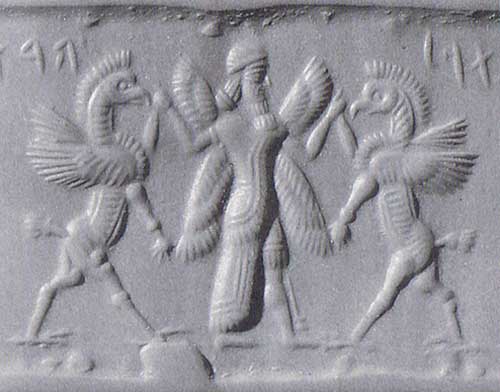
Mesopotamian cylinder seals
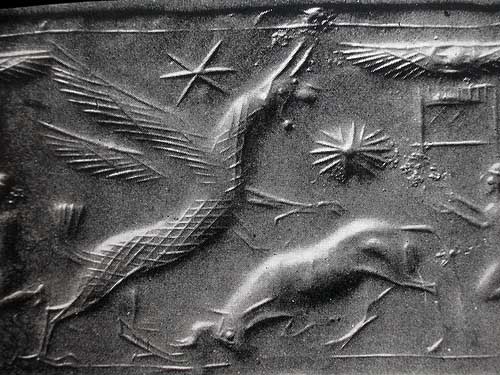
Symbolic Griffin Slaying a Bull
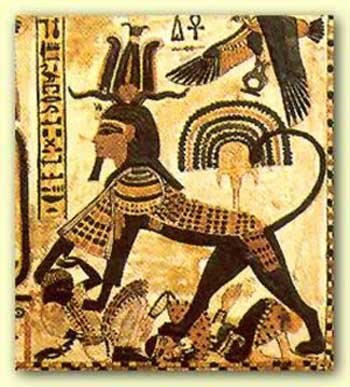
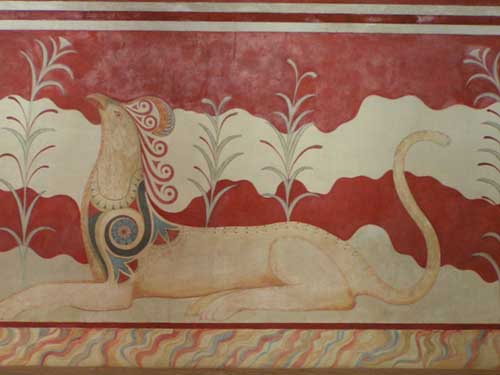
Later griffins, lacking wings, were found on the island of Crete at the Palace of Minos at Knossos. These griffins are frescos, painted into wet plaster and brilliantly colored. They "protected kings and drew chariots of goddesses".
In later Greek art the aspect of griffins change. No longer protectors, they are now fierce beasts. Molded in bronze, they "feature a hooked beak, pointed ears and tongue. In Greek vase paintings, the griffin is often depicted attacking other animals or men, but the beast was also associated with the god Apollo and the goddesses Athena and Nemesis."
Despite its large presence in art, though, griffins didn't usually show up in written literature. The griffins most people think of were the ones featured in ancient stories, guarding hoards of gold high in the mountains and defending it against all who desired it. Herodotus mentions this story as being in an epic poem The Arimaspeia by Aristeas of Proconnesus. Pliny and Aelian talk about gold-guarding griffins, too.
During Medieval times the griffin was either evil or good, depending on who you asked. Griffins in heraldry were almost always snarling and ready to strike out with their talons. In art of the time they are shown devouring sinners and ripping animals apart. In contrast to this, Church people saw the griffin as "a symbol of the earthly and divine natures of Christ".
Griffin Wikipedia
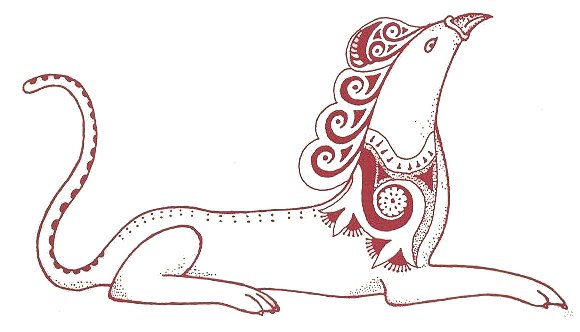
From Hans Biedermann's Dictionary of Symbolism:
A griffin is a fabulous animal, symbolically significant for its domination of both the earth and the sky - because of its lion's body and eagle's head and wings. It has typological antecedents in ancient Asia, especially in the Assyrian k'rub, which is also the source of the Hebrew cherub. The frequent representations of griffin-like creatures in Persian art made them symbolize ancient Persia for the Jews.
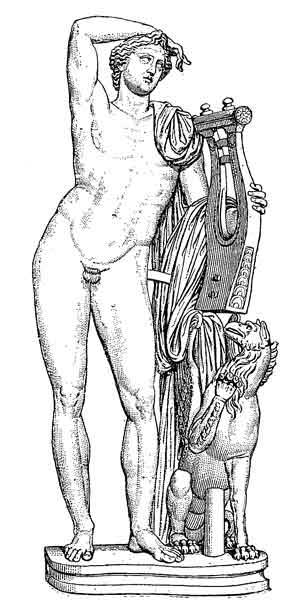
In Greece the griffin was a symbol of vigilant strength; Apollo rode one, and griffins guarded the gold of the Hyperboreans of the far north. The griffin was also an embodiment of Nemesis, the goddess of retribution, and turned her wheel of fortune. In legend the creature was a symbol of superbia (arrogant pride), because Alexander the Great was said to have tried to fly on the backs of griffins to the edge of the sky.
At first also portrayed as a satanic figure entrapping human souls, the creature later became (from Dante onward) a symbol of the dual nature (divine and human) of Jesus Christ, precisely because of its mastery of earth and sky. The solar associations of both the lion and the eagle favored this positive reading. The griffin thus also became the adversary of serpents and basilisks, both of which were seen as embodiments of satanic demons. For some Christ's Ascension came to be associated with the winged griffin.
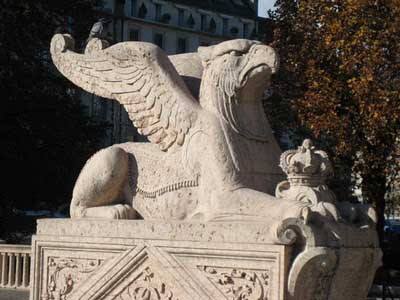
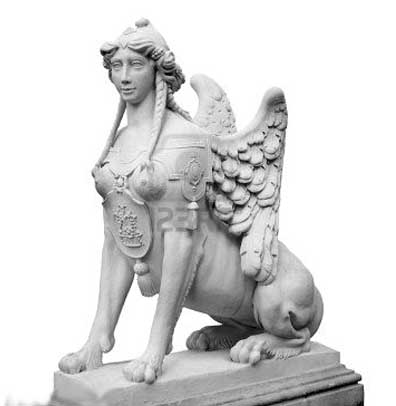
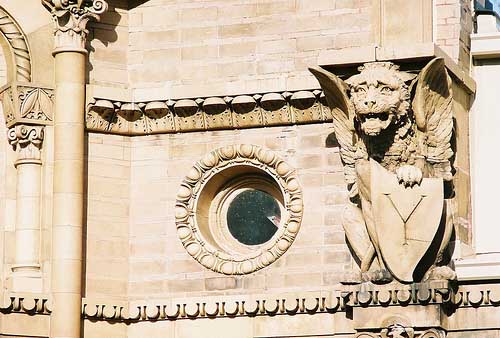
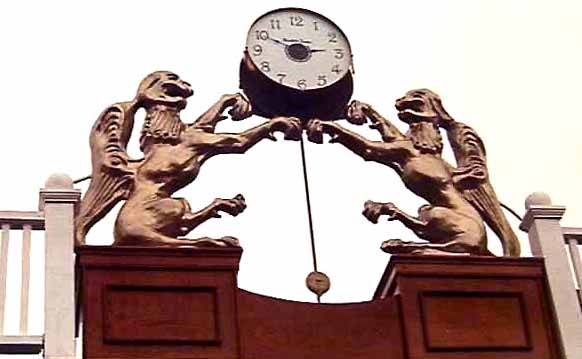
Winged Lions